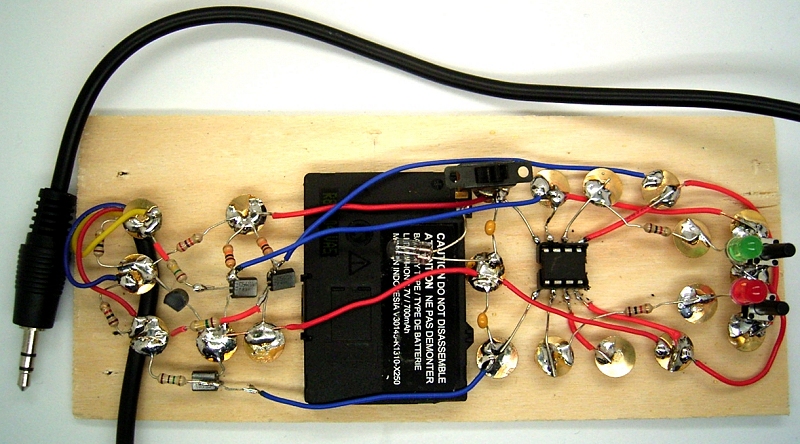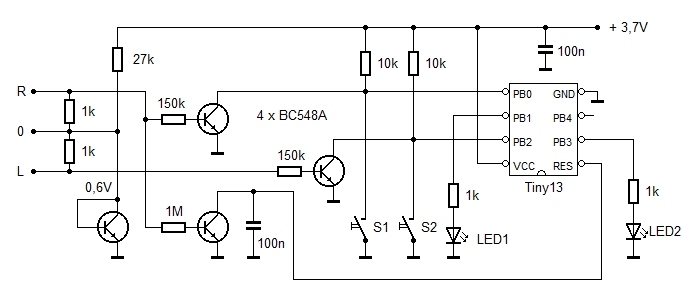 My Sparrow from the scrap
My Sparrow from the scrap
Normally the Cheepit Sparrow is a little PCB with an ATtiny13
microcontroller and a comparator LM339. But once you understand how it
works you can build it much simpler. Just use some parts from the
scrap. I found a piece of a wooden board that originated from a fruit
box and some thumb tags to hold the parts. The battery is from an old
mobile phone, much too weak to power the phone but doing well for the
sparrow. I added a little bulb rating 6 V, 100 mA serving as a fuse. So
everything is safe even in case if a short. The power switch is taken
from an old toy. And the audio cable is from the scrap. All the other
parts could be found in the junk box, four transistors BC548A, two
LEDs, two momentary switches and a few resistors and capacitors. The
most expensive part was the ATtiny13, less than one dollar?
On
the right you can see the microcontroller with the two LEDs and
switches. Left of the battery there is the little programming interface
using four transistors. Its directly connected to the audio cable. And
this is the circuit diagram.
The
Tiny13 section with switches and LEDs equals the one in the original
Sparrow. But the programing interface looks completely different. No
special parts, only some transistors and resistors. All signals are
inverted like with the Sparrow. When you use simple bipolar
Transistors, you normally need more than 0.6 V to bring them into the
conducting state. But here a bias of 0.6 V is made by the first
transistor. So you need only small signals from the audio. The
bias is even temperature compensated so it will work fine from Alaska
to Africa. If you happen to have transistors with higher current gain
like BC547B or BC547C you should use larger base resistors. The
collector voltage should be close to VCC in the idle state.
One
thing has to be noticed. The signal ground of the audio interface is
different to the signal ground GND of the microcontroller. There is a
voltage of 0.6 V between the two. In most cases this is not a real
problem since either the phone or the controller or even both of them
are floating and not connected to earth.
Another thing is you
have to play around a bit to find the best volume level. The real
Sparrow works in a wide range of levels and can even deal with some
amount of distortion. This simple circuit needs medium voltages. Just
try it. It’s one of the simplest ways to program a microcontroller.
https://hackaday.io/project/4926-cheepit-sparrow-dev-boards-for-smartphones
 My Sparrow from the scrap
My Sparrow from the scrap
 My Sparrow from the scrap
My Sparrow from the scrap

